#1856–1925 american artist
Explore tagged Tumblr posts
Text
Listen to 人生之旅 A Life Journey, a playlist by chu-lan-maria on #SoundCloud
享受你的生活,不要與別人比較。
Enjoy your own life without comparing it with that of another.
─ Marquis de Condorcet 康道塞 (侯爵) 1743-1794 他是18世紀法國啟蒙運動時期最傑出的代表之一,同時也是一位數學家和哲學家。1782年當選法蘭西科學院院士。1789年,法國大革命爆發。孔多塞成為法蘭西第一共和國的重要奠基人,起草��吉倫特憲法。他也是法國革命領導人中為數不多的幾個公開主張女性應該擁有與男子相同的財產權、投票權、工作權以及接受公共教育權的人之一。1793年7月,執政的雅各賓派以「反對統一和不可分割的共和國的密謀者」為罪名追捕孔多塞。他在9個月後被捕,隨即死於獄中。在9個月朝不保夕的逃亡生涯中,孔多塞完成了自己的思想絕唱,即《人類精神進步史表綱要》。他所表述的進步史觀,不僅成為了法國啟蒙運動的重要遺產,並對後來的思想家造成了深遠的影響。恩格斯將其與孟德斯鳩、伏爾泰、盧梭並列,成為「在法國為行將到來的革命啟發過人們頭腦的那些偉大人物」。
known as Nicolas de Condorcet, was a French philosopher and mathematician. His ideas, including support for a liberal economy, free and equal public instruction, constitutional government, and equal rights for women and people of all races, have been said to embody the ideals of the Age of Enlightenment and Enlightenment rationalism. He died in prison after a period of flight from French Revolutionary authorities.
(PS. I don't own any music and songs right, I just make the playlist for listening easily and enjoy all musicians your works and love to share it only. all copyright belongs to musician & singer. If you want me do delete yours from the playlist, please tell me then I will do it. Blessings! Thanks! Lan~*)
🍂 The oil painting by John Singer Sargent (1856–1925, American) - Carnation, Lily, Lily, Rose 1885

#playlist#人生之旅 a life journey#john singer sargent#1856–1925 american artist#born in italy died in london#orchestral#piano#strings#vocal#opera#world#ambiance#cello#violin#mix#ambient#electronic#marquis de condorcet (french 1743-1794)
15 notes
·
View notes
Text
John Singer Sargent (American, 1856-1925)

-Staircase in Capri-
941 notes
·
View notes
Text

Title: Dr. Pozzi at Home
Artist: John Singer Sargent (American, Florence 1856–1925 London)
Date: 1881
Culture: American
Medium: Oil on canvas
"Sargent was just as interested in painting fashionable men as women.
The surgeon Samuel Pozzi stands proud in a red dressing gown and Turkish slippers, one hand on heart and the other toying with the cord of his robe."
Source and Notes: 'Will It Paint?’: John Singer Sargent and the Semiotics of Style
124 notes
·
View notes
Text

Title: A Tramp Artist: John Singer Sargent (American [resident in England], 1856-1925) Date: ca. 1904-06 Genre: portraiture Period: Edwardian Movement: Impressionism Medium: watercolor Dimensions: 50.8 cm (20 in) high x 35.6 cm (14 in) wide Location: Brooklyn Museum
#art#art history#John Singer Sargent#portrait#portrait painting#figure study#watercolor#American art#Anglo-American art#Impressionism#Impressionist art#American Impressionism#20th century art#Brooklyn Museum
67 notes
·
View notes
Text

"Massage in a Bathhouse", c.1891 by John Singer Sargent (1856–1925). American expatriate artist. oil on canvas
500 notes
·
View notes
Text
Some artists that I think Arthur would really like cuz I'm kinda bored(aka, an excuse to show art history):
John Singer Sargent (1856-1925):
John Singer Sargent is an icon and his composition is legendary. He wasn't that focused on very intense detail as he was with form and it's amazing what he was able to do. Eye catching, yet unrendered. Realistic, yet simplistic. Though he paintings were phenomenal, I think Arthur would enjoy his charcoal portraits the most, though. They are so beautiful and I feel like Arthur would be fascinated by how Sargent was able to use tones to give the allusion of detail rather than actually drawing out the detail. I think Arthur would adore how Sargent made them feel so real with how simplistic the composition is.
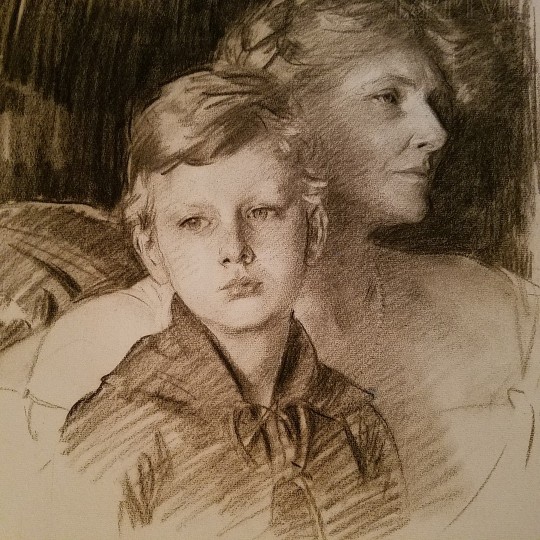
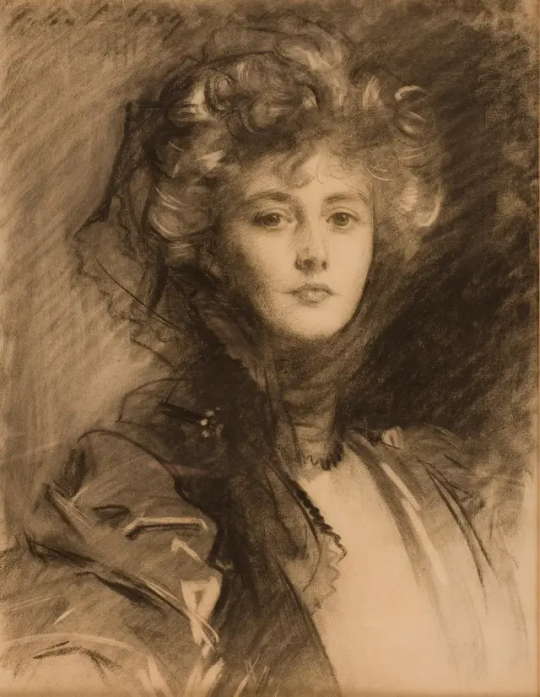
Thomas Moran (1837-1926):
Thomas Moran is a landscape artist whose main muse was the vast American frontier. His most famous paintings are that of Yellowstone National Park and the gorgeous Grand Canyon. His oil paintings are colorful and vibrant and have so much emotion to them. Given that Arthur is often outdoors and is super connected to nature, he'd probably really enjoy Moran's oil paintings of higher elevation like canyons and mountains.


Alexandre Cabanel (1823-1889):
Alexandre Cabanel is a portrait artist who created some of the most iconic oil paintings to have ever graced our eyes. His academic style of painting focused a lot on detail and precise rendering, unlike Sargent. Given the general gloominess and the melodrama of his oil paintings, I feel like Arthur would really like the figures that Cabanel painted, especially considering how emotional they are. Arthur, being emotionally repressed, might connect even more with them because of it. Cabanel was a damn genius.
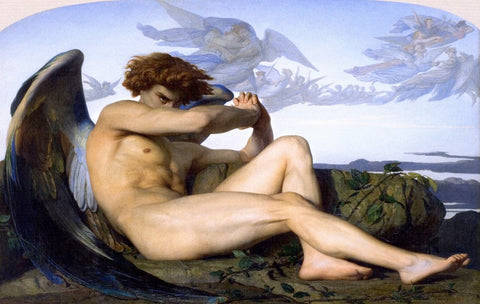

Ulysses S. Grant (1822-1825):
I know some of y'all are like "what the hell is Civil War hero and US President Ulysses S. Grant doing on this list?" Well, cuz he was a pretty dope artist too. In the few drawings we have from him, his main medium seems to be watercolor and his watercolor drawings are really unique. They focused more on composition than detail and they remind me so much of Arthur's own drawings, except they are in watercolor rather than lead or charcoal. I think Arthur might also enjoy how personal they all feel and how simplistic.
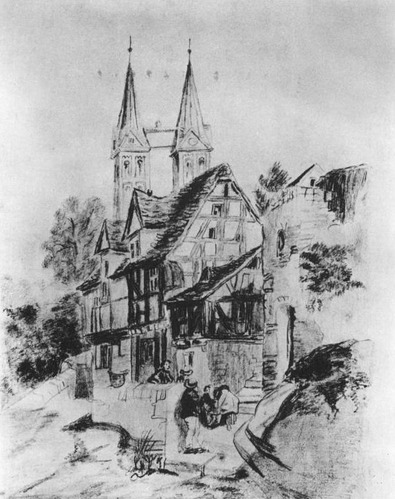
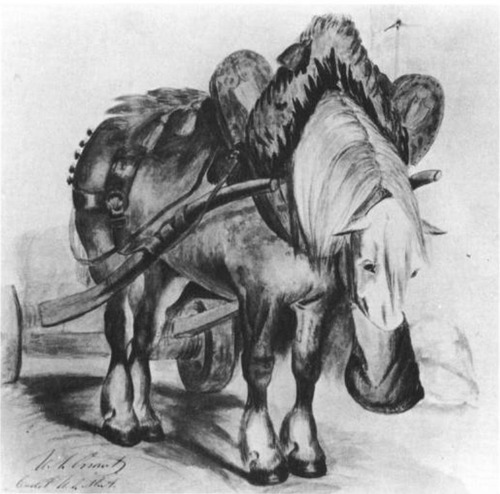
Winslow Homer (1836-1910):
Homer was an impressionist painter whose main muse was the everyday man and woman. His oil paintings are vibrant and full of life as they depict the everyday life of workers rather than people of leisure. Unrendered strokes from the brush put so much personality into the paintings and even life. Beautiful and bright paintings, all of them, but I feel like Arthur would connect most with the ones that depict land rather than the ones that depict water.
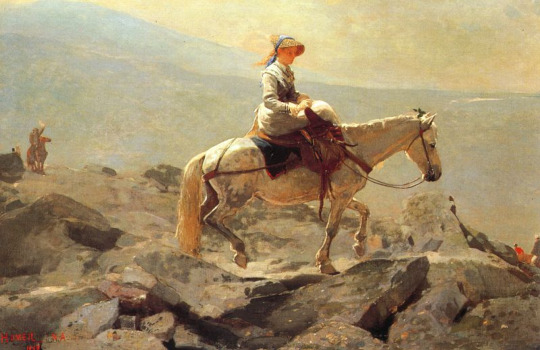
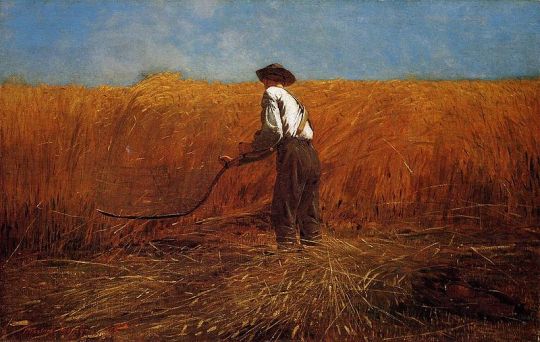
#rdr2#red dead redemption 2#arthur morgan#john singer sargent#thomas moran#alexandre cabanel#ulysses s grant#winslow homer#art history#i hope arthur got to go to art museums at some point in his life#he'd be so intrigued
73 notes
·
View notes
Text

John Singer Sargent (American, 1856-1925) ~ The Black Brook, c.1908. (Oil paint on canvas. Tate) – The girl seated in the foreground of this painting is the artist’s niece, Rose Marie Ormond, daughter of Mrs Francis Ormond and later wife of Robert Michel. The site is a mountain stream at the Chalets de Purtud, near Courmayeur, Val d’Aosta, just south-west of Mont Blanc and almost 5,000 ft. above sea-level. (NégyArt) Németh György Pin
25 notes
·
View notes
Text

Hylda, Almina and Conway, Children of Asher Wertheimer
Artist: John Singer Sargent (American, 1856–1925)
Date: 1905
Medium: Oil paint on canvas
Collection: TATE Britain
Description
This is a portrait of three of the children of the art dealer, Asher Wertheimer. It is is one of a series of twelve that Sargent painted of the Wertheimer family. The stone terrace and urn in the background recall the style of eighteenth - century portraiture in the grand manner designed to confirm aristocratic status. Here, the tradition is adopted by a wealthy, middle-class Jewish family. The riding habit and crop worn by Almina (on the right) and the spaniel with Conway (in the centre provide) also refer to aristocratic pursuits.
#portrait#siblings#fine art#oil on canvas#stone terrace#urn#grand manner portraiture#three quarter length#sitting#standing#man#women#costume#aristocracy#wertheimer family#dog#john singer sargent#american painter#oil painting#20th century painting#20th century art#tate britain
11 notes
·
View notes
Text

Painting by John Singer Sargent (1856-1925) American Artist.
16 notes
·
View notes
Text

John Singer Sargent (American expatriate, 1856-1925)
Corfu Lights and Shadows, 1909.
#john singer sargent#1856-1925 american artist#born in italy died in london#impressionism#american renaissance#new england renaissance
14 notes
·
View notes
Text

John Singer Sargent (American (Florence, Italy 1856 - 1925 London, England) ) • The Breakfast Table • 1883-84 Harvard Art Museums, Cambridge, Massachusetts, U.S.
Gallery Text (Harvard Art Museums):
In this lively portrait, Sargent explores the material culture of the Victorian elite. The ostensible subject is his younger sister, Violet, who peels an orange in the midst of her morning reading. But Sargent is as interested in conveying his sister’s character as he is in portraying her surroundings. Laden with ceramics, crystal, crisp white linens, and shimmering silver, The Breakfast Table captures the look and feel of the well-appointed French apartment that the Sargent family rented in the south of France in the summer of 1883.Painted in Paris, the work exemplifies Sargent’s regard for the formal innovations of the French impressionists. With its cropped and compressed foreground, loose brushwork, and muted palette punctuated by daubs of bright white, it evokes the paintings of Degas and Manet. An inscription at lower right dedicates the work to Albert Besnard, a French artist and friend who also explored the effects of light and shadow.
#art#paintings of interiors#fine art#painting#making room blog#paintings of domestic interiors#british artist#american artist#american painter#painter#harvard museums#museum aesthetic#art lover#art blogging#art blog#pagan sphinx art blog#figurative art#impressionism#john singer sargent#favorite artist#gallery text
34 notes
·
View notes
Text

Dr. Pozzi at Home (portrait of Dr. Samuel Jean Pozzi), c.1881 by John Singer Sargent (1856-1925). American expatriate artist. Hammer Museum, Los Angeles, CA. oil on canvas.
146 notes
·
View notes
Text
The Illustrious Client
First published in the US in 1924 and the UK in 1925, the latter as a two-parter, this forms part of Case-book.
The first part in The Strand ends with Watson seeing the newspaper headline about the attack on Holmes.
Northumberland Avenue is a street running from Trafalgar Square to the Thames Embankment. It includes a pub called The Sherlock Holmes.
The Carlton Club was founded by the Conservative Party and was long its defacto headquarters. Originally on Carlton Terrace, it moved to Pall Mall in 1835, with the building rebuilt in 1856. A direct hit by a German bomb in 1940 destroyed the building and the Club moved to 69 St James's Street, former home of Arthur's Club. Women were not allowed to be associate members until the 1970s and not full members until 2008, with Margaret Thatcher getting honorary membership when she become Tory leader in 1975. She later become club president in 2009, although by his point she had dementia and died in 2013.
The general consensus is that the "Illustrious Client" is no less than Edward VII himself, who Holmes may have previously gotten the Beryl Coronet back for.
Prague was then under Austrian rule.
The Splügen Pass, used for travel since Roman times, connects Switzerland and Italy and with its great height, hairpins and spectacular views, is considered one of the greatest driving challenges on the planet, having featured in Top Gear. The San Bernandino tunnel has taken most of the non-tourist traffic and it is now closed in winter for safety reasons.
Kingston upon Thames, known as Kingston for short, is a town located 10 miles SW of Charing Cross. Until 1965, it was in Surrey before becoming part of Greater London and part of the Royal Borough of Kingston upon Thames. Surrey County Council were based there until 2021, when their offices moved to Reigate.
The Hurlingham Club in Fulham is where horse polo's rules were established - it even hosted Olympic polo in the 1908 London Games, but the fields were compulsorily purchased by the local council after the Second World War for housing. It was also home to pigeon shooting and was home of world croquet, still holding major events in the latter. Edward VII was a keen patron of the site.
Charlie Peace was an English burglar and double murderer, executed in 1879. He ended up featuring in Madame Tussaud's Chamber of Horrors, which was oddly enough replaced between 2016 and 2022 with an immersive Sherlock Holmes Experience... which at £66.50 a ticket was a bit too expensive.
HMP Parkhurst, a Category B prison located on the Isle of Wight, merged in 2009 with HMP Albany to form HMP Isle of Wight, although each part retains its own name. Notable inmates include the Kray Twins, Peter Sutcliffe, Ian Brady and currently Serbian war criminal Radovan Karadžić.
Hypnotism was rather in vogue by this time.
Apaches were the name given to various criminal gangs in Paris; named after the Native American tribe. There are various suggestions as to how that came about.
Montmartre, in the 18th arrondissement of Paris, was widely known for its artistic community during this time, with many a famous name living there due to the low rents. It's still there and development is restricted due to the historic character. Pigalle, Paris's red-light district, is next door.
Kitty Winter would feature as a character in Elementary, played by Ophelia Lovibond. Gruner turns up as well.
"Tinker’s curse" is Kitty saying, in the language of the time, that she does not give an [expletive deleted].
Ruritania is a fictional country first featured in the 1894 Anthony Hope novel The Prisoner of Zenda. It has become a byword for quaint small European countries in Central and Eastern Europe.
China was still an Empire in 1902, nominally ruled by the Guangxu Emperor, aka Zaitan, but an 1898 coup resulted in his loss of any real power; he was even in house arrest for a while. He died in 1908, probably poisoned by arsenic. His nephew, Puyi, would be the last Chinese Emperor and is beyond the scope of this article.
I cannot discuss Chinese pottery in any depth and so will not attempt to.
Some husbands might have questioned the gallantry of King Edward VII, who had a box for his mistresses at his coronation.
Armorial bearings are the "shield" part of a coat of arms. The British royal one traditionally depicted a bare-breasted woman as part of the harp on the bottom left, but this is no longer standard practice.
Edward VII, while having no actual political power, was able to exercise quite a bit of influence behind the scenes, especially in foreign and defence policy.
All criminal prosecutions are brought in the name of the monarch, rendered "R" (Rex or Regina) in text and "the Crown" when spoken). i.e. R vs. Winter. In addition, judicial reviews (i.e. is this government decision legal) are also brought in the name of the monarch, with the name of the actual plaintiff in brackets since a 2001 change to the format, e.g. R (Smith) vs. Secretary of State for the Home Department. It is common for initials to be used in those brackets to protect the identity of a plaintiff, such as the recent decision on flying migrants to Rwanda.
#letters from watson#sherlock holmes#the illustrious client#illu#acd canon#factoids#history#Edward VII
28 notes
·
View notes
Text
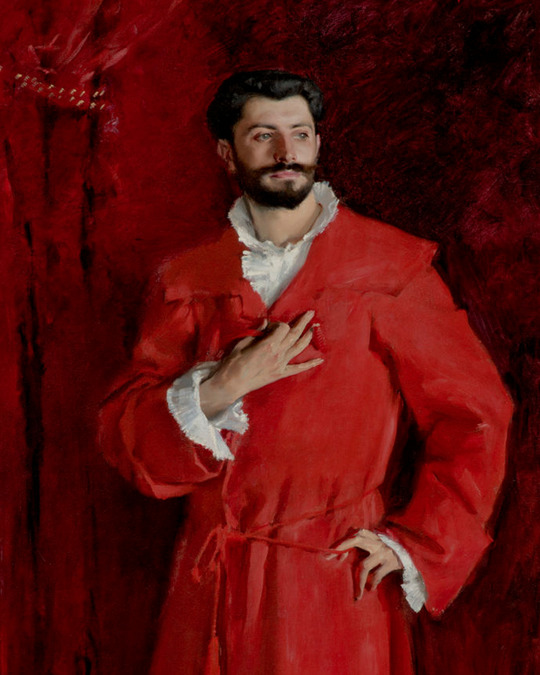

“Dr. Pozzi at Home” (portrait of Dr. Samuel Jean Pozzi), c.1881 by John Singer Sargent (1856–1925). American expatriate artist. Hammer Museum, Los Angeles, CA. oil on canvas
298 notes
·
View notes
Photo

John Singer Sargent (American, 1856-1925) Madame Ramón Subercaseaux, 1880 Metropolitan Museum of Art
Amalia Subercaseaux (1860-1930), wife of Chilean consul and artist Ramón Subercaseaux, seated at a piano in the couple’s elegant and stylish residence on the Avenue du Bois de Boulogne. The portrait occupies an important place in the narrative of Sargent’s early career. Exhibited at the Paris Salon in 1881, along with his portrait of the Pailleron children, it earned him a second-class medal, which meant that he was allowed to exhibit at future Salons without submitting to the jury.
#John Singer Sargent#art#fine art#classical art#european art#1800s#female#portrait#female portrait#brunette#woman#lady#Madame Ramón Subercaseaux 1880#Madame Ramón Subercaseaux#fine arts#beautiful art#world history#art history#Amalia Subercaseaux
104 notes
·
View notes
Text

John Singer Sargent (American, 1856–1925) • Mrs. Abbott Lawrence Rotch • 1903 • Private collection
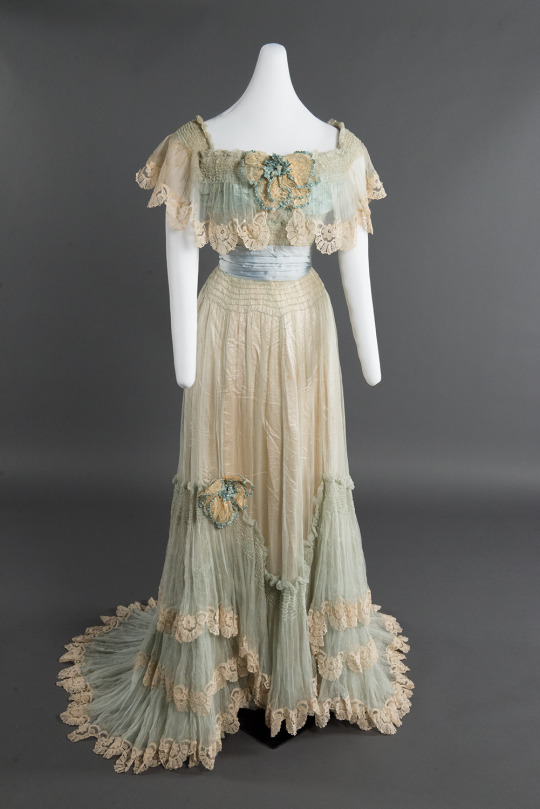

Dress Credit: Callot Soeurs (French, active 1895–1937), Evening dress, about 1900, silk, chiffon, and linen lace • Private collection
Viewing both the portrait and the photograph of the dress offers a distinct occasion to consider the artist, the subject, the dynamics of portraiture, and the culture of the time period during which both portrait and garment were produced. Now on view, the elegant blue and white evening dress designed by the Parisian couturier Callot Soeurs at the turn of the twentieth century and worn by Mrs. Abbott Lawrence Rotch for her portrait by John Singer Sargent. The premier international portraitist of the late nineteenth and early twentieth centuries, Sargent flourished as a painter to the English upper class.
#art#art history#portrait#painting#fine art#female portrait#british high society#society portrait#beautiful dresses in paintings#fashion history#callot soeurs#dress design & maker#john singer sargent#parisian couturier#early 20th century british art#american-british artist#the resplendent outfit blog#art & fashion blog
12 notes
·
View notes